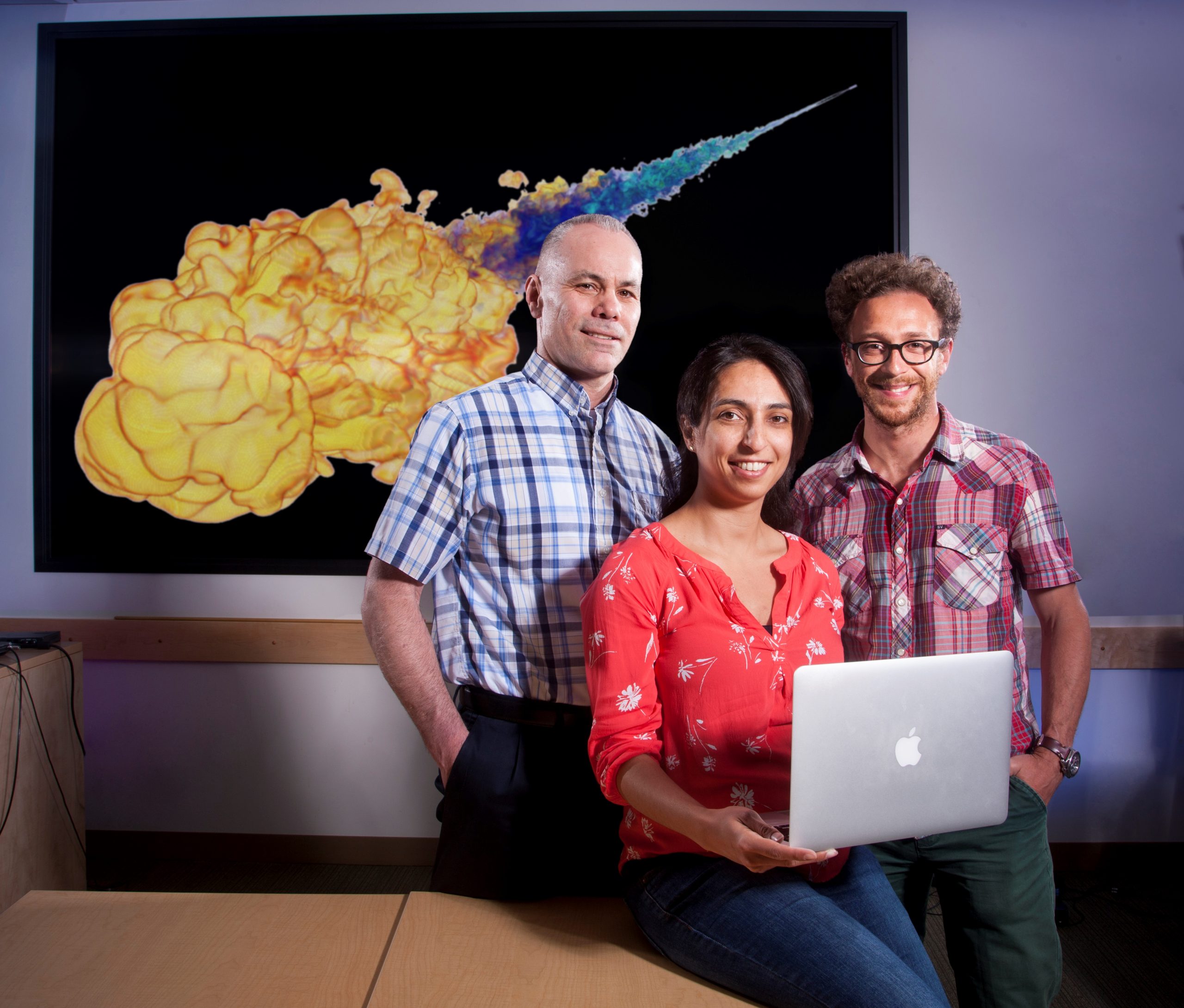LIVERMORE, Calif. — Researchers at Sandia National Laboratories have developed a model for how diesel engines autoignite that should lead to increased engine efficiency and a better understanding of how pollutants form.

Sandia postdoctoral researcher Layal Hakim, working with mentors and Sandia principal investigators Guilhem Lacaze and Joe Oefelein, designed and implemented an optimized chemical model that describes autoignition of a diesel fuel surrogate and quantifies the degree of uncertainty in the model.
Understanding the fundamental processes that produce autoignition can lead to designs that improve engine efficiency and reduce emissions by optimizing the timing and location of ignition. This model will serve as a key component of simulations that provide new insights into the effect of high-pressure liquid injection, fuel chemistry and turbulent mixing on diesel combustion efficiency and emissions, Hakim said.
The research was published in April in the SAE International Journal of Fuels and Lubricants in a paper titled, “Large Eddy Simulation of Autoignition Transients in a Model Diesel Injector Configuration.”
“Environmental concerns have induced a strong need in developing more efficient and cleaner engines and fuels,” Hakim said. “One current bottleneck is the understanding of the oxidation of large hydrocarbon fuels over a wide range of operating conditions.”
Because diesel fuels are composed of thousands of different chemical species, detailed kinetic models typically aren’t practical for simulations. Thus, surrogate fuels with just a few components are used to approximate the physical and chemical properties of real fuels.
“We use n-dodecane in our simulation as a surrogate fuel to mimic diesel. But while detailed mechanisms are an active research topic to model and understand the chemical behavior of such surrogates, we still need a more affordable representation of the subtleties of the n-dodecane chemistry when we study the key physics that lies in the combination of mixing and chemistry. This is where our chemical model has proven its usefulness,” Hakim said. “The physical processes in diesel jet injection and ignition are still not fully understood, and experiments, while invaluable, can only provide a limited level of detail. Therefore, numerical simulations are good candidates to reveal missing information.”
The group also collaborated with Sandia researchers Mohammad Khalil, Khachik Sargsyan and Habib Najm, drawing on their expertise in determining the degree of uncertainty in the model.
“Quantifying the impact of uncertainties introduced by such a chemical approximation on the simulation predictions is crucial for providing meaningful data,” Hakim said.
The lack of accurate models representing the physics of injection, vaporization, turbulent mixing and ignition is a major barrier to the design of new engines, she added. Simulations complement key experiments by providing complementary, high-resolution benchmark data at the same conditions to test and improve engineering approaches that industry uses. Hakim said the spatial and temporal fidelity of the Sandia team’s calculations provide access to full broadband three-dimensional characteristics of injection, ignition and combustion.
Studies such as these contribute to the entire research community through Sandia’s Engine Combustion Network. The team hopes to perform joint comparisons that use data generated through the model to understand the accuracy of a range of models used in engineering codes.
This published research contributes to the mission of Sandia’s Combustion Research Facility where simulations complement experiments and bring key insights to improve real engines.